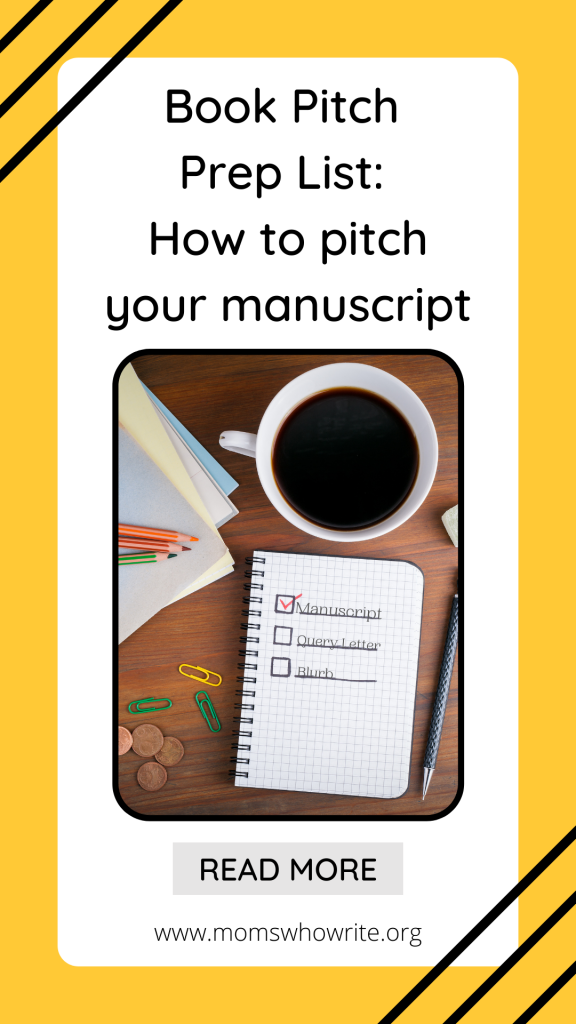There are many routes to traditional publishing—cold queries and pitch sessions, Twitter events, and contests. Some of these options will take you directly to publishing house editors; most funnel through the ever-elusive Literary Agent. Every single one of them will require this book pitch prep list.
The good news? It’s a shortlist. The hard news? Every item is a specialized document with specific formatting and content requirements.
Book Pitch Prep List Documents
*Remember that not every traditional publisher will require all of these documents. Always do your research first to locate a publisher’s unique submission requirements before making preparations.*
Manuscript
The first thing to have ready is your manuscript. Now, I don’t just mean the completed work–although, yes, obviously, it should be a completed work! I’m talking about a document with some standard expectations.
In 2022, a manuscript should be double-spaced, with chapters beginning partway (2 or 3 inches) down the page and “headers” unless otherwise noted by an agent or publisher. A header is an editable document element that transforms according to a preset formula. In other words, if you select a header that includes a [page number] field, it will automatically number your pages for you—you don’t have to type the individual numbers on each page.
A publisher or agent will most likely require a header, including some combination of your title, author name, genre, and/or word count depending on the specific submission requirements of the person you’re approaching. In Microsoft Word, click the Insert tab and select Header. Pick something as plain as possible.
You may also need to provide a cover page on your manuscript or use a particular program (like Word) to submit it. Make absolutely sure you understand the unique requirements of everyone you pitch because they do vary.
First Pages
Most submissions allow you to include a certain number of pages or chapters with your inquiry. You may be asked to include these in the body of an email or as a separate attachment. So whatever the requirements, make sure you confirm exactly.
Synopsis
The next thing on the book pitch prep list is the synopsis. Most writers agree that the synopsis is the most difficult and aggravating thing to put together. You must boil down your entire plot line to a single page. Usually, this is a single-spaced page with an extra space between paragraphs. It gives away all the major details. Yes, even the ending.
The synopsis may not be required in every submission process, but it is by most– write one either way. First, it’s good practice for describing the bones of your book if you have an unexpected opportunity. Second, it’s better to have on hand for the next agent or submission who does require a synopsis, which also gives you the chance to tweak the thing over time until you need it.
Keep in mind that the synopsis is not the same as a blurb. It’s a very technical document with its own purpose and its own rigid set of rules.
Query Letter
A query letter is another single-page, single-spaced document, but the rules are a bit more fluid here.
Generally, a query letter contains some form of your blurb (an open-ended description of your book’s premise). It may also include something about you as the author, especially if you have special qualifications—tenure as a history professor, experience as a carnie, anything that makes you able to create a more authentic experience for your readers in the setting about which you’ve written.
A query absolutely must include the book’s genre, the word count rounded to the nearest thousand, and the title. Additionally, if you’re writing a solicited query (meaning the agent asked you to contact them, perhaps after an in-person pitch or a Pitmad even), make sure to reference that request in an opening greeting.

How to order your Book Pitch Prep List
So, what order do you put all of this in? Most often, lead with the blurb, unless that opening greeting matters. The technical and numbers stuff can follow in a short paragraph right after. Then, you can add anything necessary about yourself. Lastly, put a “thanks for your consideration” element in there if you have room. But then, that’s not a hard-and-fast-formula. Play around with it. Figure out what reads best. Remember, everything you submit should show off your skill and voice as a storyteller.
Happy hunting on your pitching journey!
Now you’re ready to start pitching your book to literary agents or wherever you have the opportunity! First, have trusted writer friends take a peek at those documents– as the good book says, there’s safety in a multitude of counselors! Save different versions of these documents as you get feedback or get struck with inspiration, and see what’s most effective.
Happy hunting!
About the Writer: Kathryn Tamburri (@KathrynTamburriAuthor) writes clean YA epic fantasy novels which seethe with slow-burn romance. You can find more of her writing tips on The Devo Blog at KathrynTamburri.com, and learn from her publishing journey by subscribing to her fun author newsletter!

1 thought on “Book Pitch Prep List: How to pitch your manuscript”